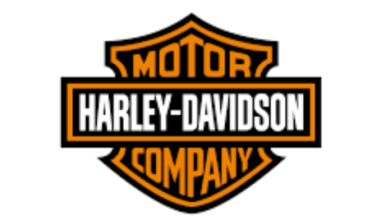
What is Asset-Based Lending, and how does it work?
An asset-based loan (ABL) or line of credit is a form of loan that is secured by certain types of assets in the lending sector. Small and mid-sized businesses typically use these types of loans to meet their short-term cash flow demands. They can use the loan to buy products, pay suppliers, or fund expenses like wages and rent (also known as a “working capital” line of credit).
If you’re thinking about asset-based lending for your company, you should understand how it works, who qualifies, how much it costs to borrow money this way, and how it varies from invoice factoring. Continue reading to discover the benefits and drawbacks of an ABL loan and whether it’s the best option for your company.
What is an asset-based loan, and how does it work?
Collateral (assets with a particular value is used to secure the loan in asset-based lending, in addition to the company’s commitment to pay on the loan agreement. If the borrower fails to make payments, the lender has the right to sell these assets to recoup their losses. This incentivizes firms to keep up with their loan payments, while also lowering the risk for banks and other lending institutions. Collateral for firms can be both material and intangible.
The following are examples of tangible assets:
- Receivables (accounts receivable) (the most common)
- Inventory
- Equipment
- Buildings
- Vehicles
- Land
The following are examples of intangible assets:
- Orders for goods
- Securities, investment funding
- Stocks
- Payment privileges
- Trademarks and copyrights
Typically, the cost of the collateral exceeds the amount of the loan and includes the borrower’s total cost when the assets are destroyed. Lenders prefer liquid assets, such as accounts receivable and inventories, because they are easier to convert to cash. A corporation can often borrow 70-85% of the value of their acceptable security with accounts receivable. It could be as low as 50% or less with assets like inventories or equipment.
Asset-based lending can take the form of a revolving line of credit or an asset-based term loan with monthly principal and interest payments.
What Are the Benefits of Asset-Based Lending?
Asset-based lending such as stock loans are often used by businesses in need of a cash injection for day-to-day operations or to grow to the next level. An ABL is appealing to businesses that are rapidly expanding but lack the financial resources to take the next step. This form of loan fills in the gaps in their financial flow, allowing them to expand.
What Kinds of People Are Eligible for Asset-Based Loans?
To qualify for ABL lending, a company must be stable and have financeable assets that aren’t being used as collateral elsewhere. Asset-based lending is generally for small and medium-sized enterprises, and it can be easier to qualify for than other types of business financing.
How much does an ABL cost?
ABL loans are generally based on the amount of the loan, the type of collateral used, and the risks involved. Most have an annual percentage rate (APR) of between 7% and 17%, with origination and administration fees thrown in for good measure. An ABL’s higher costs are frequently attributable to more extensive examination and management of the collateral.
What is the difference between an asset-based loan and factoring?
An asset-based loan is one in which the company uses its accounts receivable as collateral. Factoring allows a company to sell its receivables for cash immediately away, rather than having to wait 30 to 90 days for invoices to be paid. The purchasing business will notify the payer and verify the invoice’s accuracy as part of the purchase agreement.
Should I Finance My Company Using Asset-Based Lending or Factoring?
When deciding whether to use an ABL or factoring to boost your company’s cash flow, there are various aspects to consider. You may be eligible for one sort of company financing but not the other, depending on how long you’ve been in business and what assets you have available as collateral. Because there might be significant overlap between the two financing alternatives at times, it’s important to seek advice from a specialist with experience in this field.
Consider the following:
Is your business a start-up?
When you factor in your receivables, the firm that buys them assumes ownership and is liable for collection. They could help you save time and money by processing invoices and doing credit checks on your consumers. In addition to firm assets like inventory and equipment, an asset-based lender looks at your company’s payment history as well as that of your customers.
Are you in desperate need of cash?
Factoring agreements are quicker to close than ABLs, but once established; both types of financing can provide cash in a short period of time – typically 1 to 2 days after you invoice your customer.
How much cash do you require?
While an asset-based loan often ranges from a few hundred thousand to a few million dollars, there is no minimum for factoring.
Are you looking for a flexible arrangement?
When compared to a bank or an institutional lender, your firm may have greater flexibility with a factor. Some banks will factor invoices, allowing the company to transition into an ABL more smoothly as it expands and stabilizes.
Worldwide Stock Loans’s collateral loan Services Can Assist You in Obtaining Funding for Your Small Business
WWSL can assist your start-up or small firm in obtaining capital through an ABL, Stock Loan, or factoring. They’ll provide you with guidance on which type of finance is best for your business. And assist you with other financial responsibilities on an as-needed basis.
Related Article:



